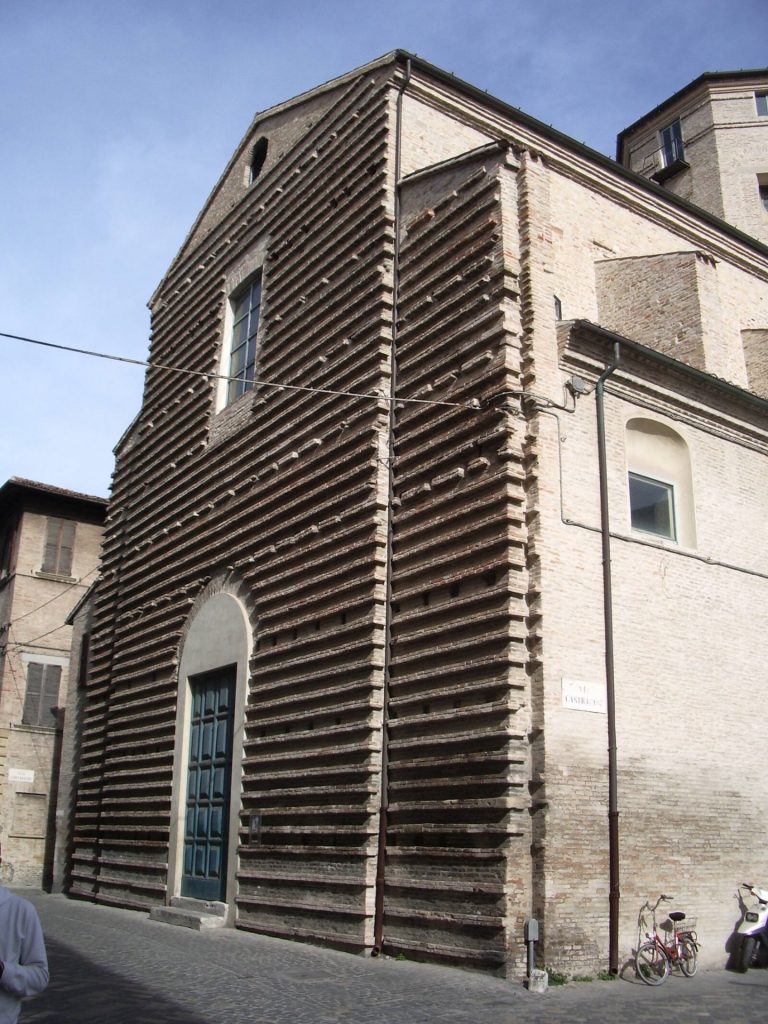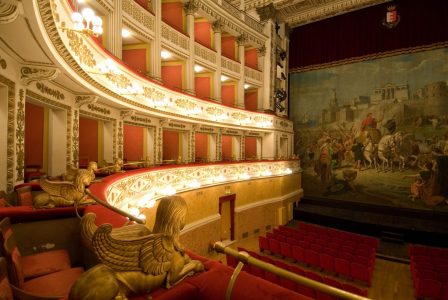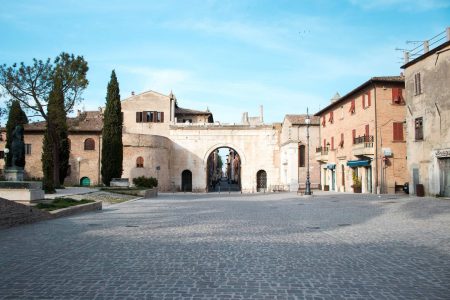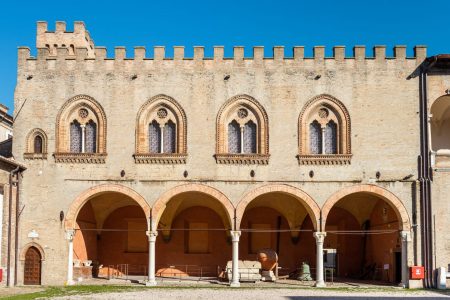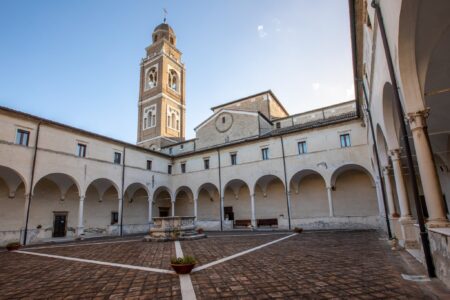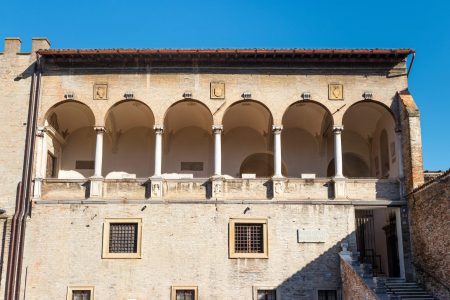Baroque Fano
In Fano, Baroque art has given the beautiful Church of San Pietro in Valle, an authentic gallery of gold, stucco, marble and paintings, one of the most appreciated Baroque churches in the Marche region. Of the same style is the Nolfi Chapel, inside the cathedral, with frescoes by Domenichino.

Nolfi Chapel
The sumptuous Nolfi Chapel was so named by the Fano patricians Guido and Cesare Nolfi, who after 1604 had it entirely transformed with the collaboration of various artists, including the architect Girolamo Rainaldi, who gave the design for the rich plastic decoration of the vault and side walls (made by the stucco artist Pietro Solari) in whose panels Domenico Zampieri (il Domenichino) frescoed between 1618 and 1619 the sixteen beautiful episodes of the Life of the Virgin.
By Andrea Lilli of Ancona, on the other hand, is the large canvas depicting The Paradise and the Assumption (around 1606) placed on the altar wall, while by the sculpture Francesco Caporale are the busts of the two Nolfi placed on their respective funerary munuments. Another important pictorial work is the beautiful canvas with the Virgin in Glory and the Sainted Bishops Comprotectors Bear and Eusebius by Ludovico Carracci (1613), placed on the altar of the chapel to the right of the preburiary and flanked by the images of St. Anthony the Abbot and St. Francis by the fanesse Bartolomeo Giangiolini, who was a pupil of Carracci.
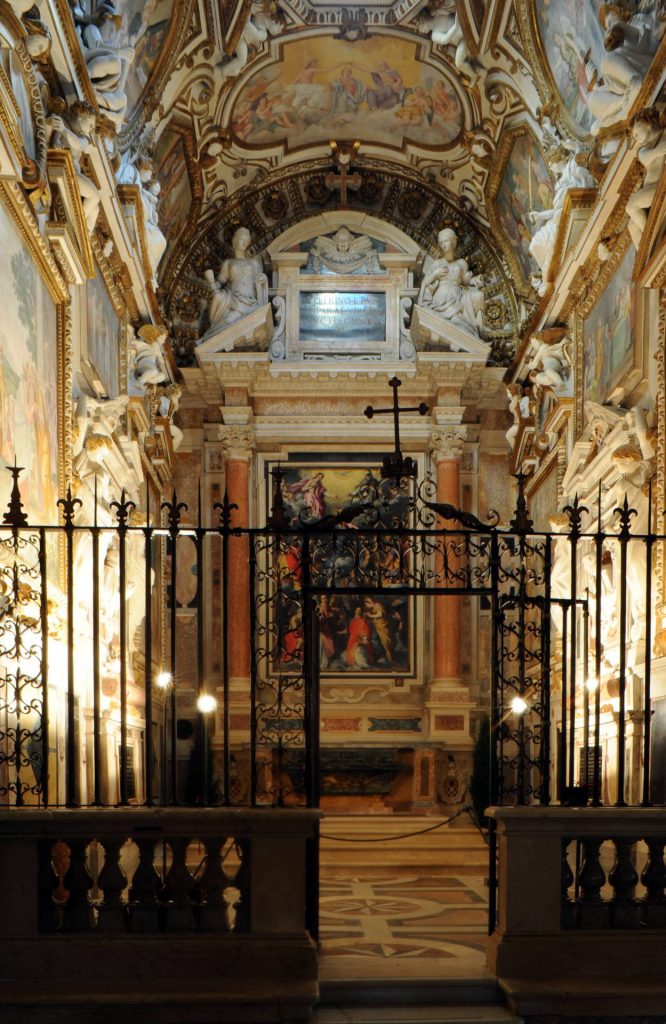
Fortune Fountain
Piazza XX Settembre is the ancient platea magna of the late Middle Ages overlooked imposingly by the 14th-century Palazzo del Podestà (now in its changed role as the facade of the Teatro della Fortuna) with the rebuilt Civic Tower.
Its functions have always been as a space used for civil ceremonies and the market: what is evidenced by the numerous businesses that replace the stores of the old merchants today. On the western side, the one flanking Corso Matteotti, stands the Fountain of Fortune with its large characteristic mixtilinear basin of colored marble, entirely renovated (including central bowl and lions) in 1697-99 by the Venetian Ludovico Torresini.
The graceful bronze statuette of the Goddess Fortuna is a faithful copy of the original (now at the Museo Civico) modeled and cast in 1593 by Urbino Donnino Ambrosi to embellish the primitive octagonal basin of the old fountain made in 1576. It is considered a civic symbol and recalls in its mannered elegance sculptural models of Giambolognesque art.
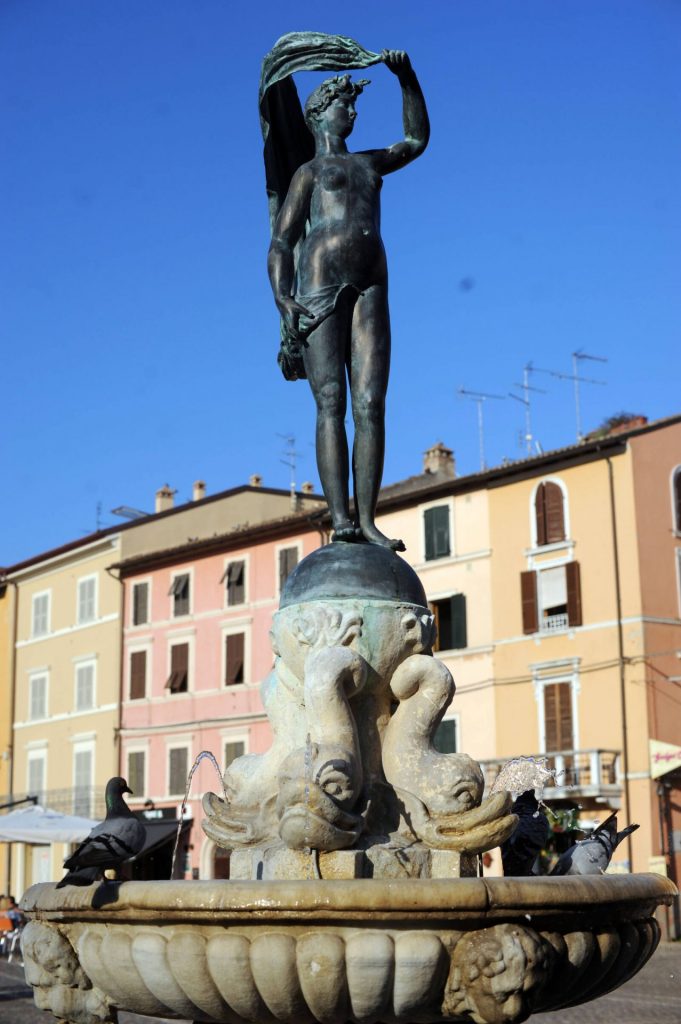
Montevecchio Palace
In size and grandeur it is the largest of Fanesi’s patrician palaces, belonging until the first half of our century to the family of the Counts of Montevecchio, who had overseen its erection beginning in 1740.
Left unfinished along its eastern flank, now questionably integrated, its design has been attributed without evidence to Luigi Vanvitelli. On the other hand, the participation of the Bolognese Alfonso Torreggiani is documented in its realization, as is that of Arcangelo Vici from the Marche region: what is also stylistically evident from the prevalence of a strong scenic component, almost a transposition of Bibienesque fantasies into stone.
Torreggiani is especially credited with the solution of the central part of the facade with the large Baroque stone portal, flanked by the sturdy Tuscan columns that, obliquely arranged, support the beautiful arched balustrade of the balcony to which is connected the ascending motif that from the median window reaches the corbels of the refined little balcony in the center of the upper floor.
Also noteworthy is the large columned atrium, open against the monumental backdrop of the wall fountain with statue of Neptune, looming within the elegant elliptical room that complements and concludes the area of the severe central courtyard.
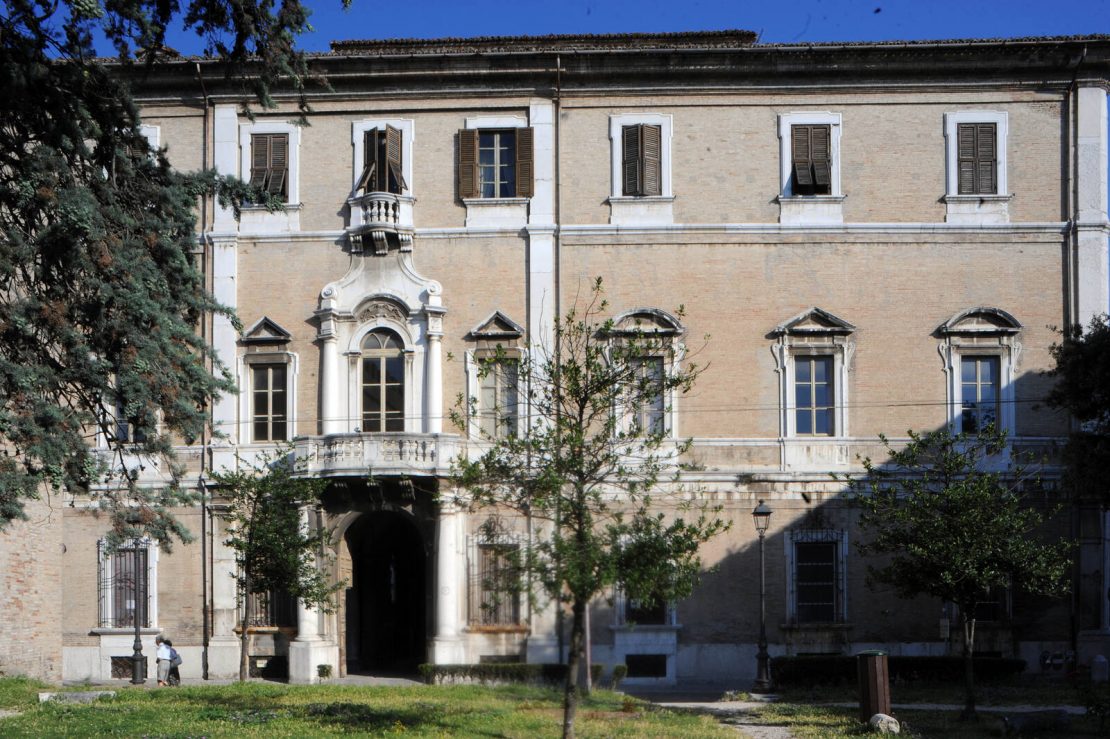
The most spectacular room, however, remains the grand staircase with its scenic ascending with wide steps, all glimpses and perspectives, niches, columns and pillars in the first part; open and sprawling in the bright vaulted space of the second part, enriched by the ascending array of the eight marble statues that pause and embellish the elegant balustrade with pilasters.
In other times a capacious salon with a perimeter balcony welcomed intimidated and fascinated guests, serving as an antechamber to the various halls and lounges on the main floor. The apartment on the western side has some rooms with vaults painted with grotesques.
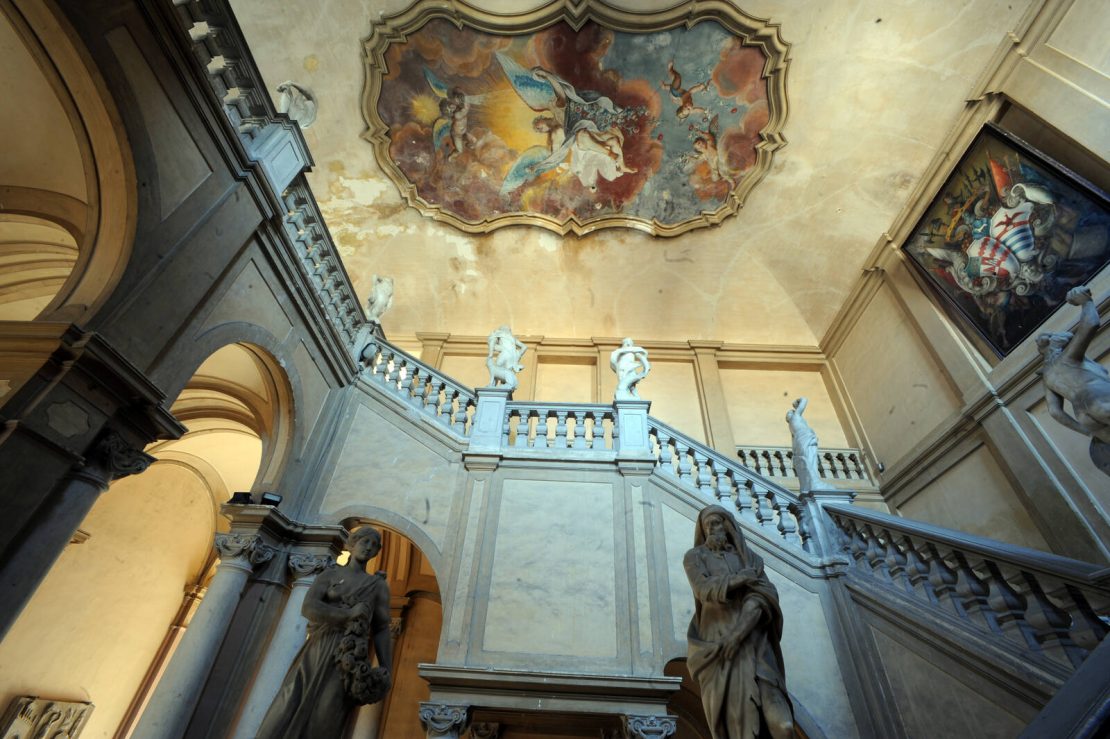
Church of San Pietro in Valle
Begun in 1610 by the Neapolitan Giovanni Battista Cavagna and inaugurated in 1616, the Church of San Pietro in Valle is now one of the most beautiful Baroque buildings in our region. Located along G.Nolfi Street, it shows an extremely simple facade made of bricks.
In contrast, the interior, with a single nave with side chapels and a dome, is characterized by rich plastic and pictorial decoration: In 1619 the stucco decoration was made by Pietro Solari, and between 1618 and 1620 the frescoes were executed by Antonio Viviani of Urbino. The sumptuous decoration of the dome, which dates to the years 1699-1700, is the work of the bolognese Lauro Buonaguardia.
A rich collection of canvases, now housed in the Pinacoteca Civica, embellished the entire complex: these are paintings by Antonio Viviani, Guido Reni, Alessandro Vitali, Giovan Giacomo Pandolfi, Simone Cantarini, Matteo Loves, Luigi Garzi, Lorenzo Garbieri, Giovanni Francesco Guerrieri, Sebastiano Ceccarini, and Carlo Magini.
